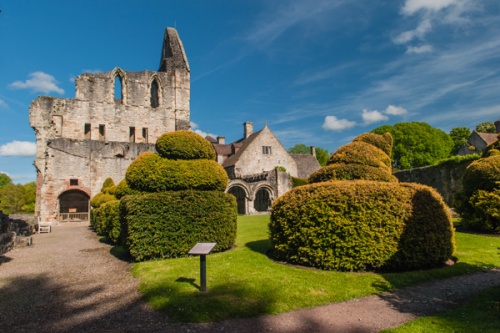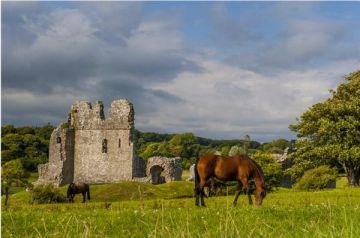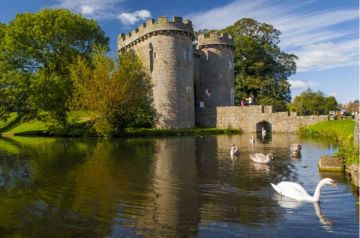
Visitors to Shropshire could be forgiven for rushing north through the county to medieval Shrewsbury, home to Brother Cadfael of literary fame. But if you think a mediaeval monk is all the county has to offer, think again! The county presents an intriguing mix of rural countryside dotted with lovely villages, historic half-timbered cottages and manors, and industrial heritage.
Beginning in the south of Shropshire, the small town of Ludlow - the headquarters of Slow Food UK - is a deservedly popular destination. Though it features a number of buildings of note, including the fine St Laurence's Church, its primary claim to fame rests on two in particular - one in superb condition, the other falling into a state of ruin.
The former is the magnificent Feathers Hotel, a frequently photographed half-timbered inn which has welcomed guests since 1521. It is arguably the finest example of half-timbering in England.

The partial ruin is Ludlow Castle, the seat of the Lord President of the Marches until 1689. The castle was home to Princes Edward and Richard, sons of Edward IV.
The princes lived here until taken to the Tower of London and (perhaps) murder in 1483. In the summer, a Shakespeare festival takes over the town for two weeks, and plays are performed in the castle. In the grounds of the 12th-century church in Ludlow are the remains of poet A.E. Houseman, author of "A Shropshire Lad".
At the north end of the high ridge called Wenlock Edge is Much Wenlock, whose narrow streets are ringed by half-timbered buildings. A highlight of Much Wenlock is the ruins of St. Milburga's Priory, originally founded in 680 by St. Milburga, granddaughter of the pagan king Penda the Terrible.
The priory was sacked by the Danes in the 9th century and later re-endowed by Lady Godiva (yes, THAT Lady Godiva). The buildings you can see today were built just after the Norman invasion in 1066. Swing south-east from Much Wenlock and you will soon reach Bridgnorth.

Bridgnorth is unique in that it is divided into a Low Town and a High Town. The old town centre is in High Town, atop a 120-foot bluff so steep that a cliff railway is needed to bring visitors up. In High Town are the ruins of Bridgnorth Castle, partly destroyed by Cromwell's troops in 1646. The castle keep now leans crazily to one side at an angle three times that of the more famous leaning tower at Pisa.
The grounds of the castle are a public park once described by Charles I as "the fairest walk in my domain." Bridgnorth is also home to the Severn Valley Railway, which operates steam trains on a 12 mile run to Bewdley during the summer months.
We haven't yet mentioned the county town of Shrewsbury, most popular recently as the home of fictional medieval detective Brother Cadfael. The ruins of Cadfael's Abbey stand outside the town walls, and avid readers of the Cadfael mysteries will enjoy following in the monk's footsteps and identifying places mentioned in the books.
From the romance of fiction to the realities of the Industrial Revolution, the complex of sites around Ironbridge Gorge has been named a World Heritage Site. The area was a bustling centre of the iron industry in the early 18th century, but now the remarkable cast-iron suspension bridge across the Severn is surrounded by museums preserving the heritage of iron smelting, china, tiles, and even teddy-bears!
There is so much to see in Shropshire; we haven't yet mentioned Stokesay Castle, arguably the finest fortified manor in England, or The Long Mynd, a superb walking area known in the Victorian period as "Little Switzerland".









